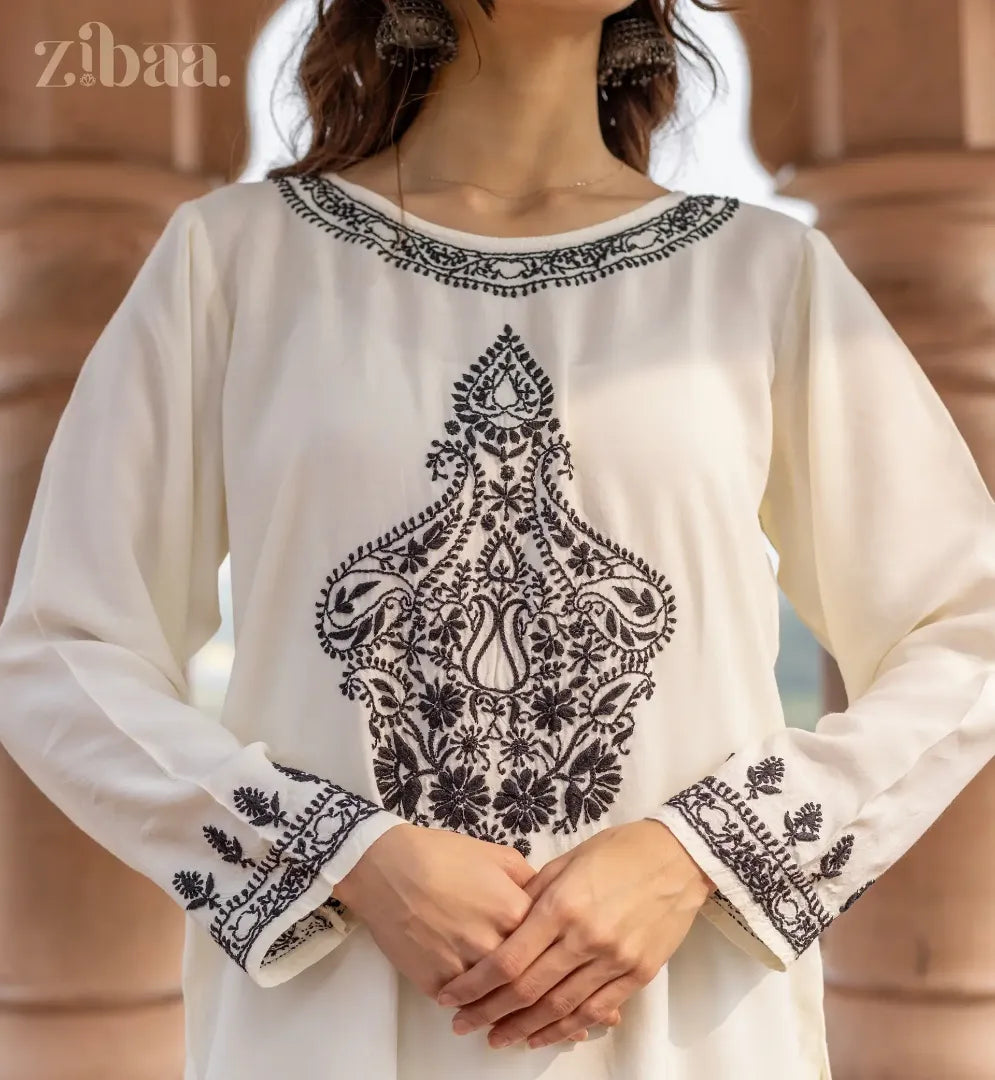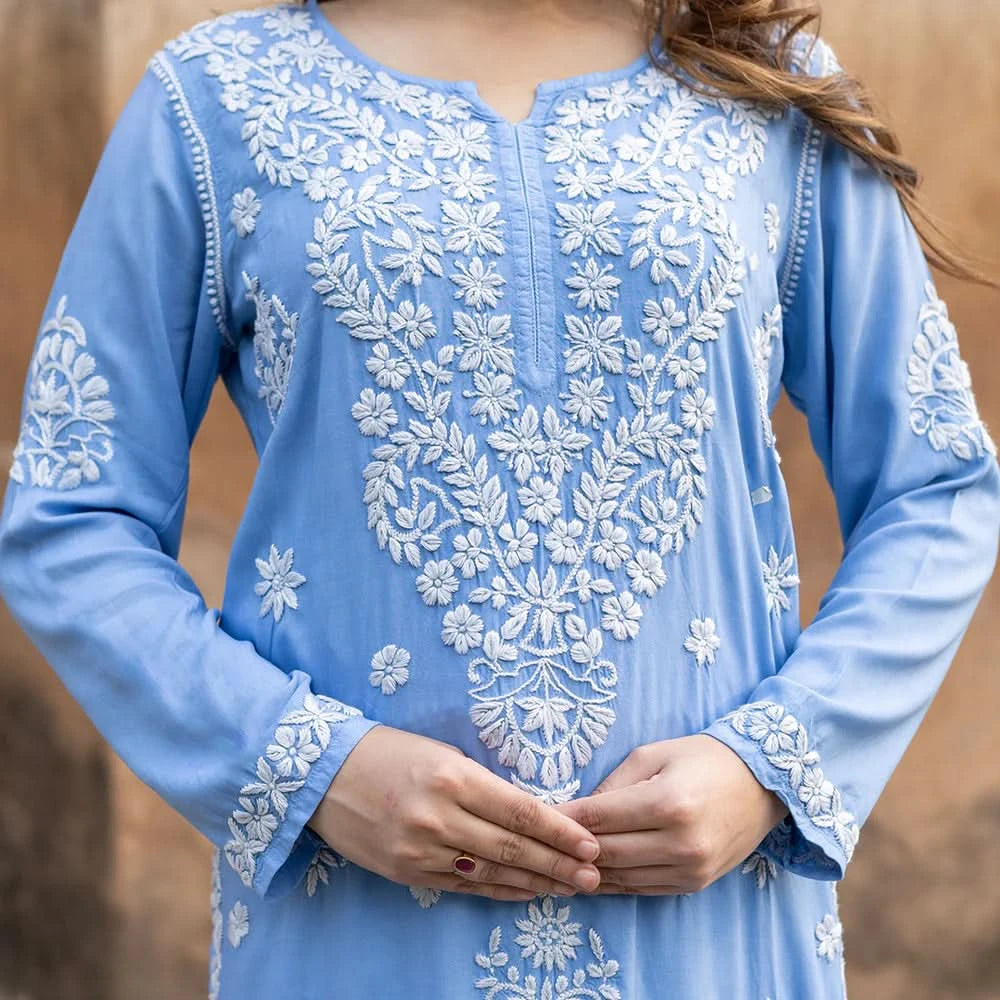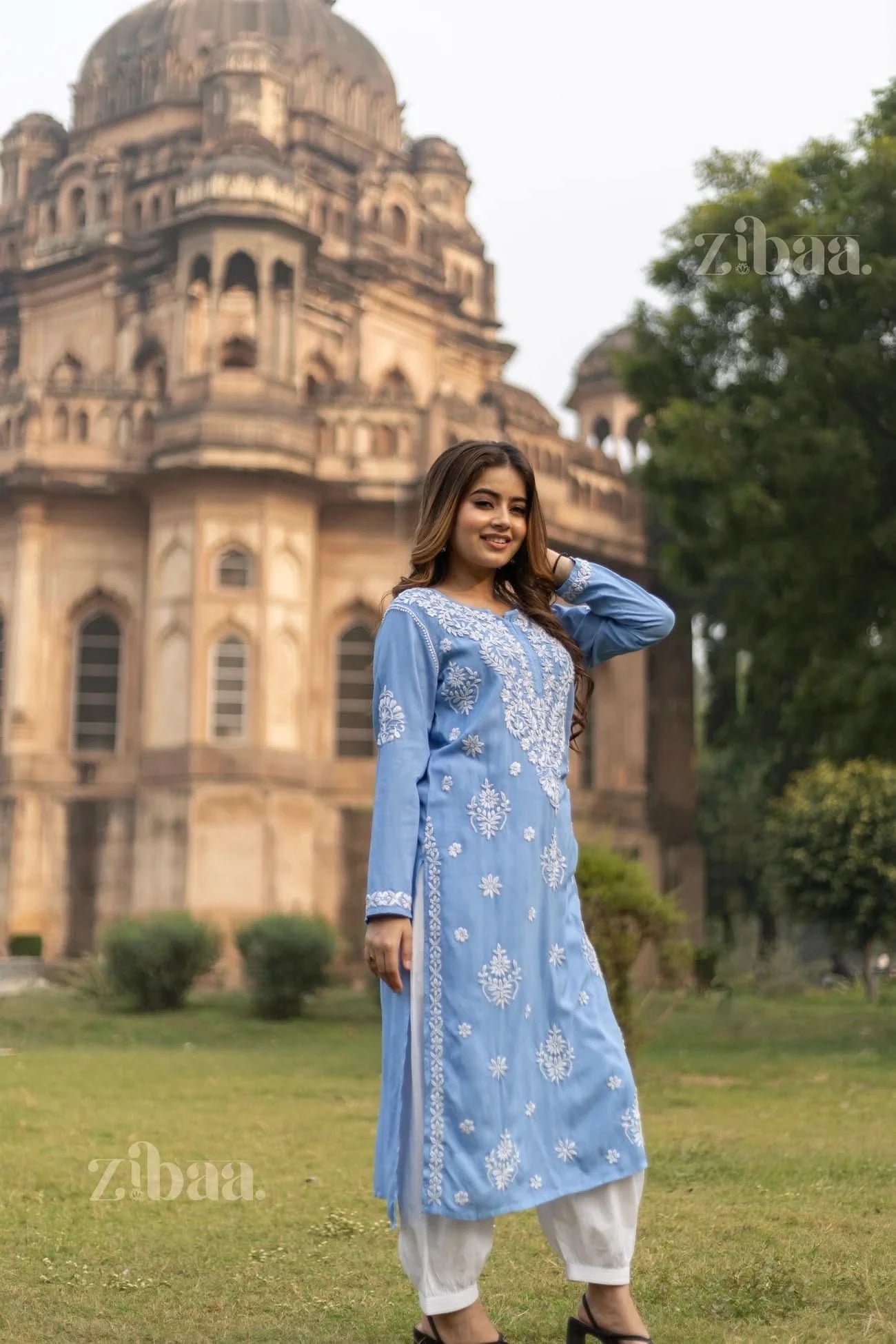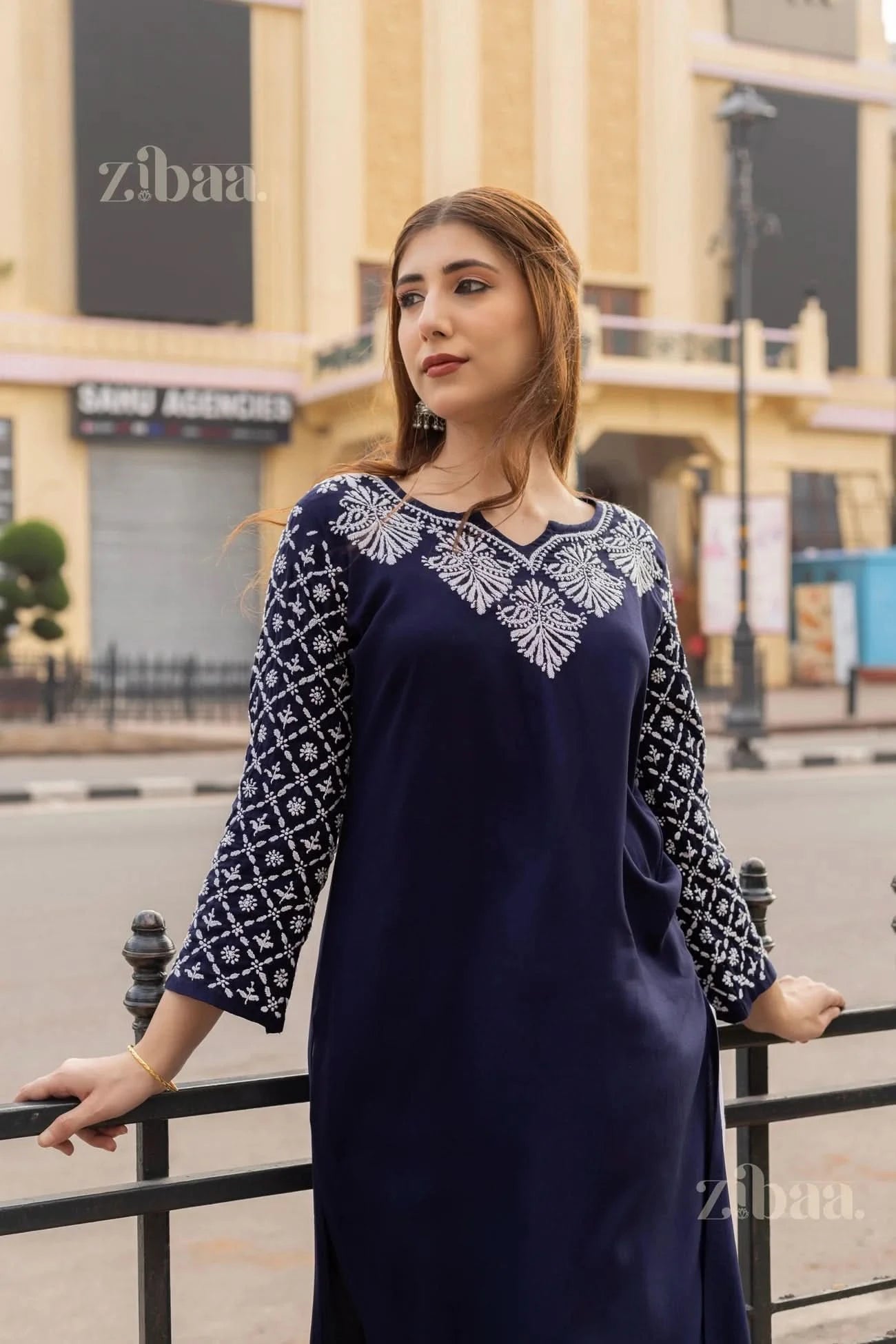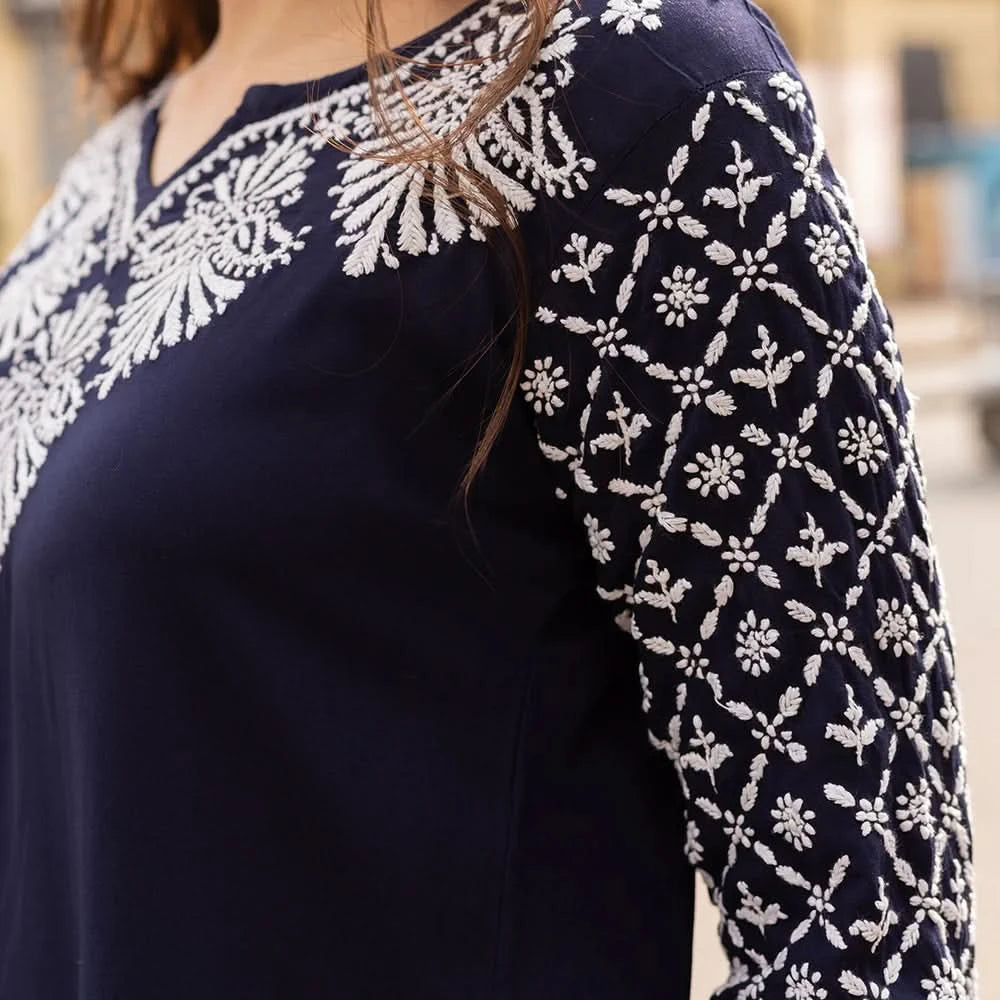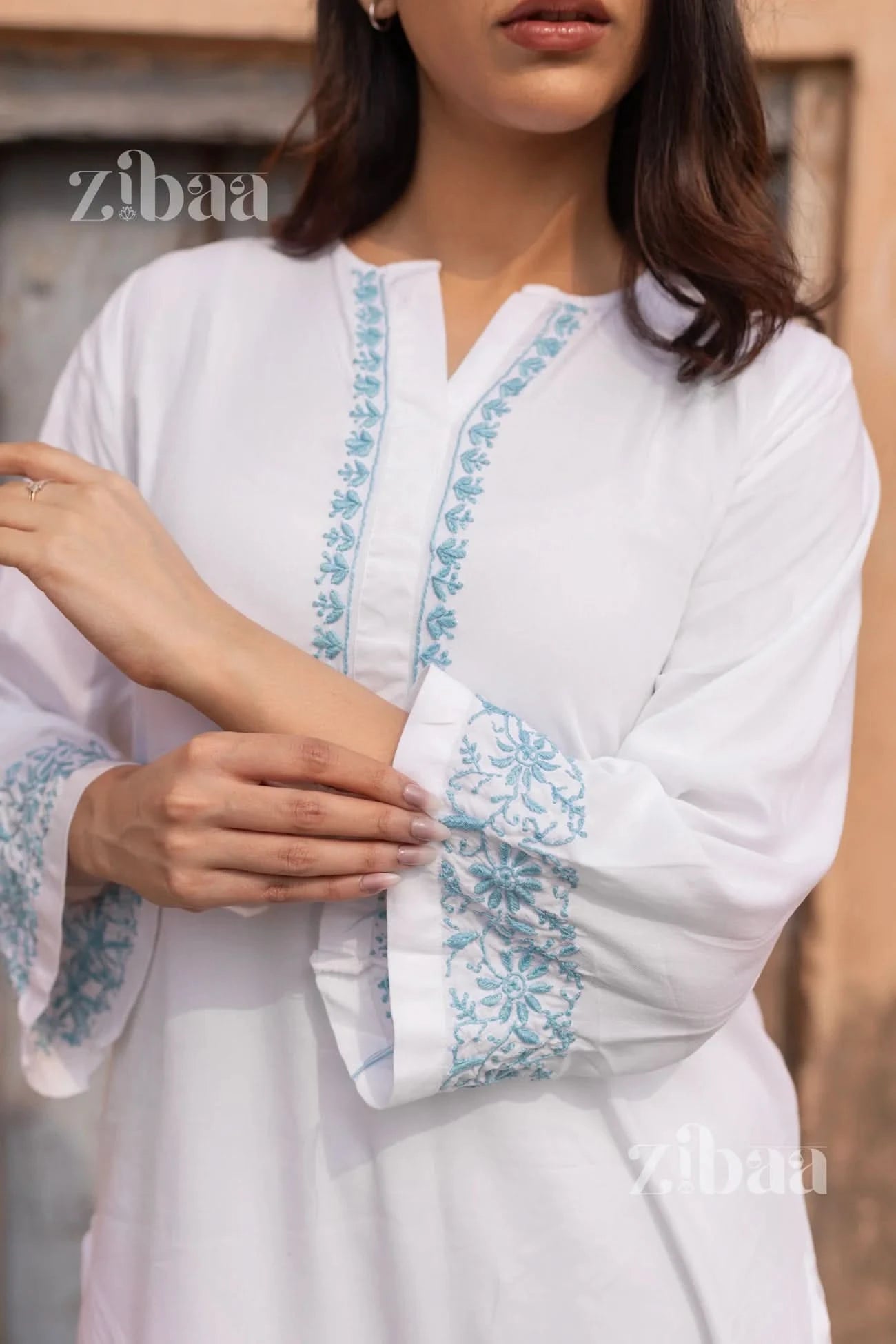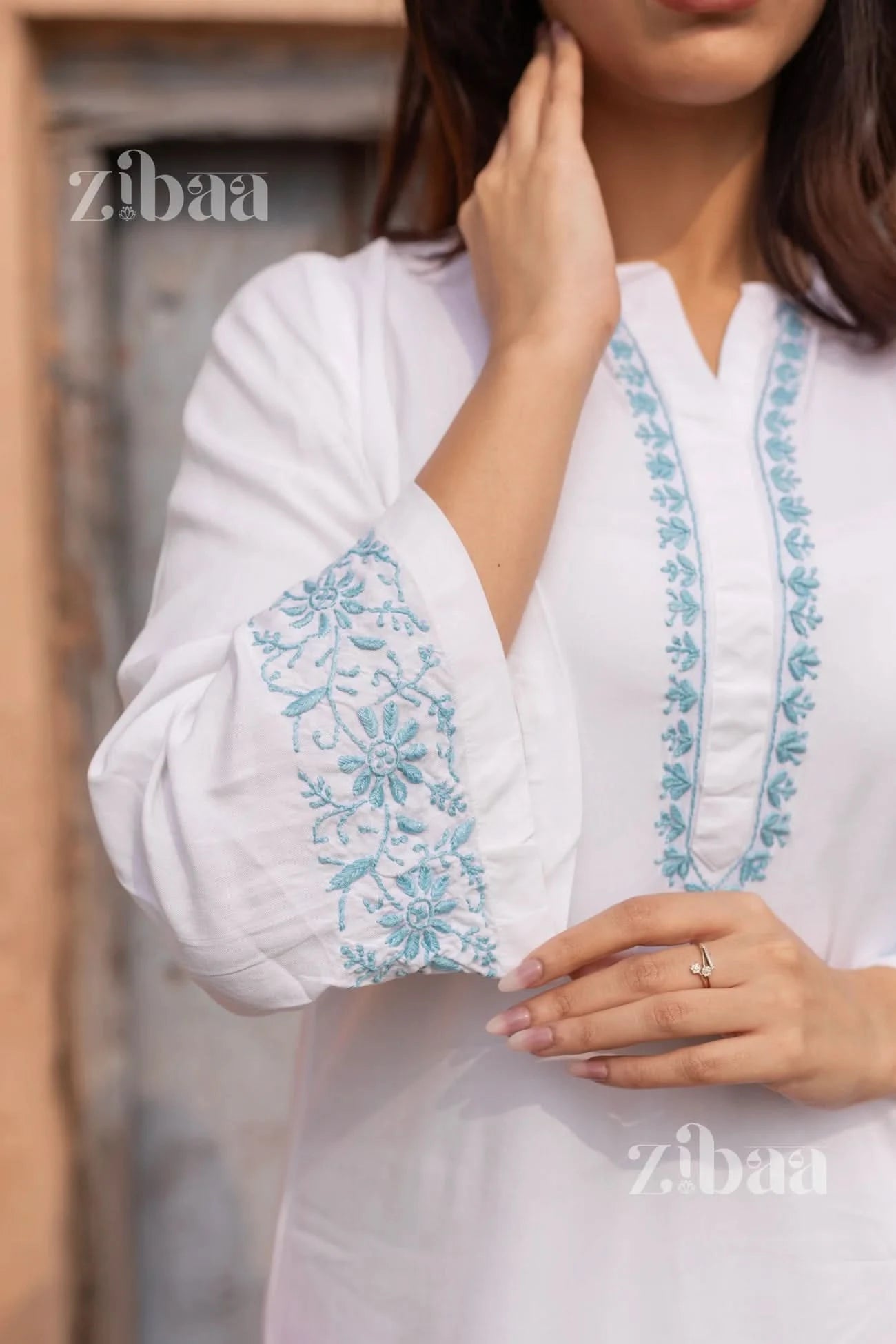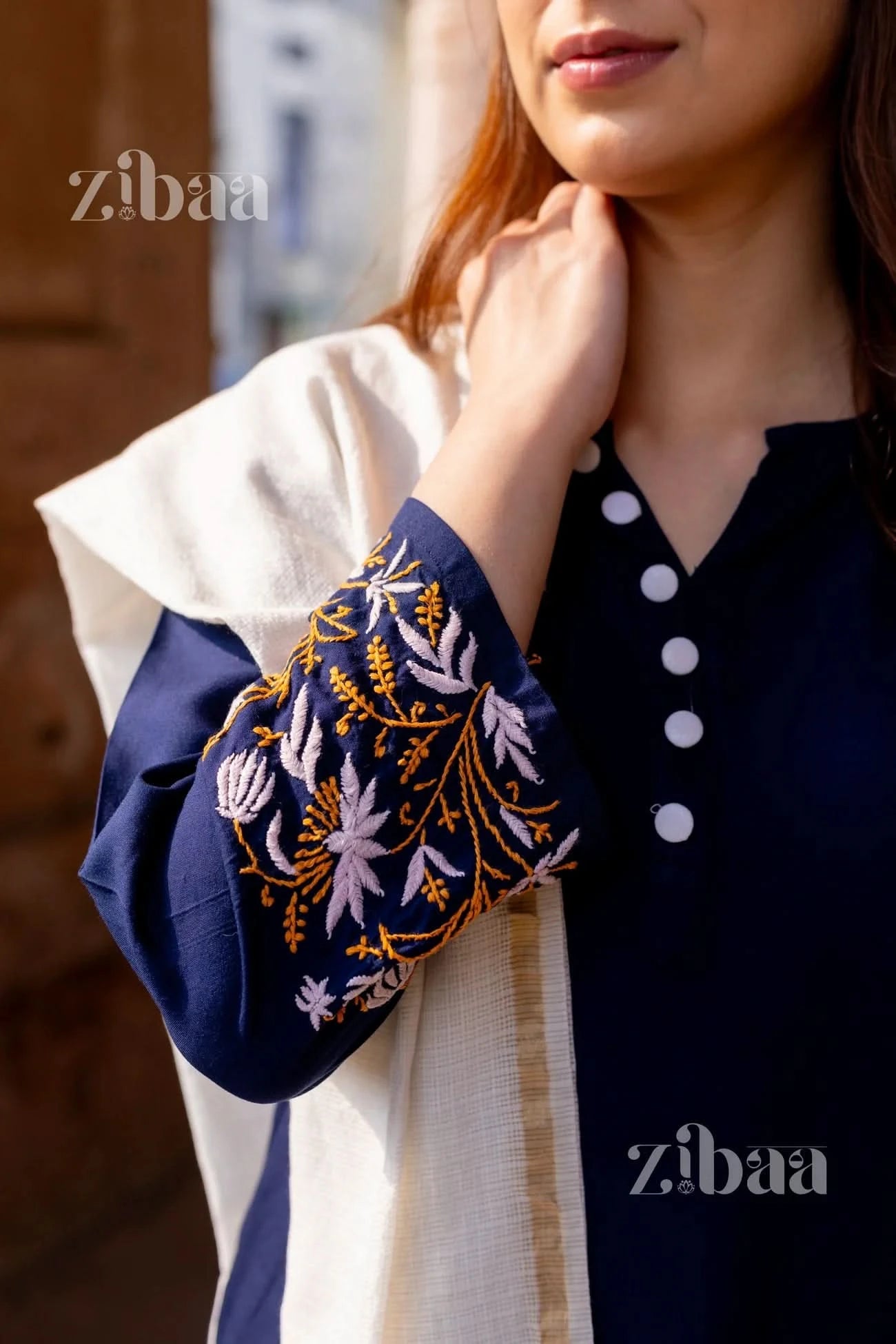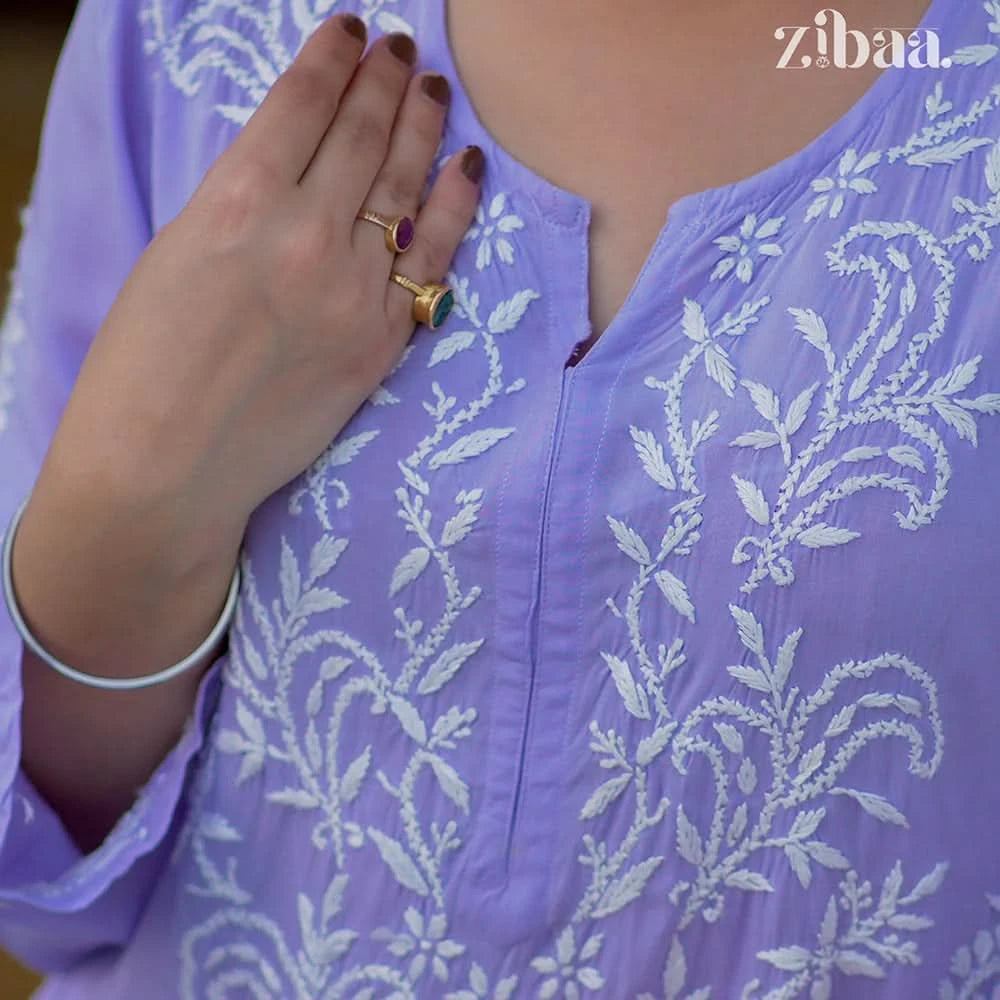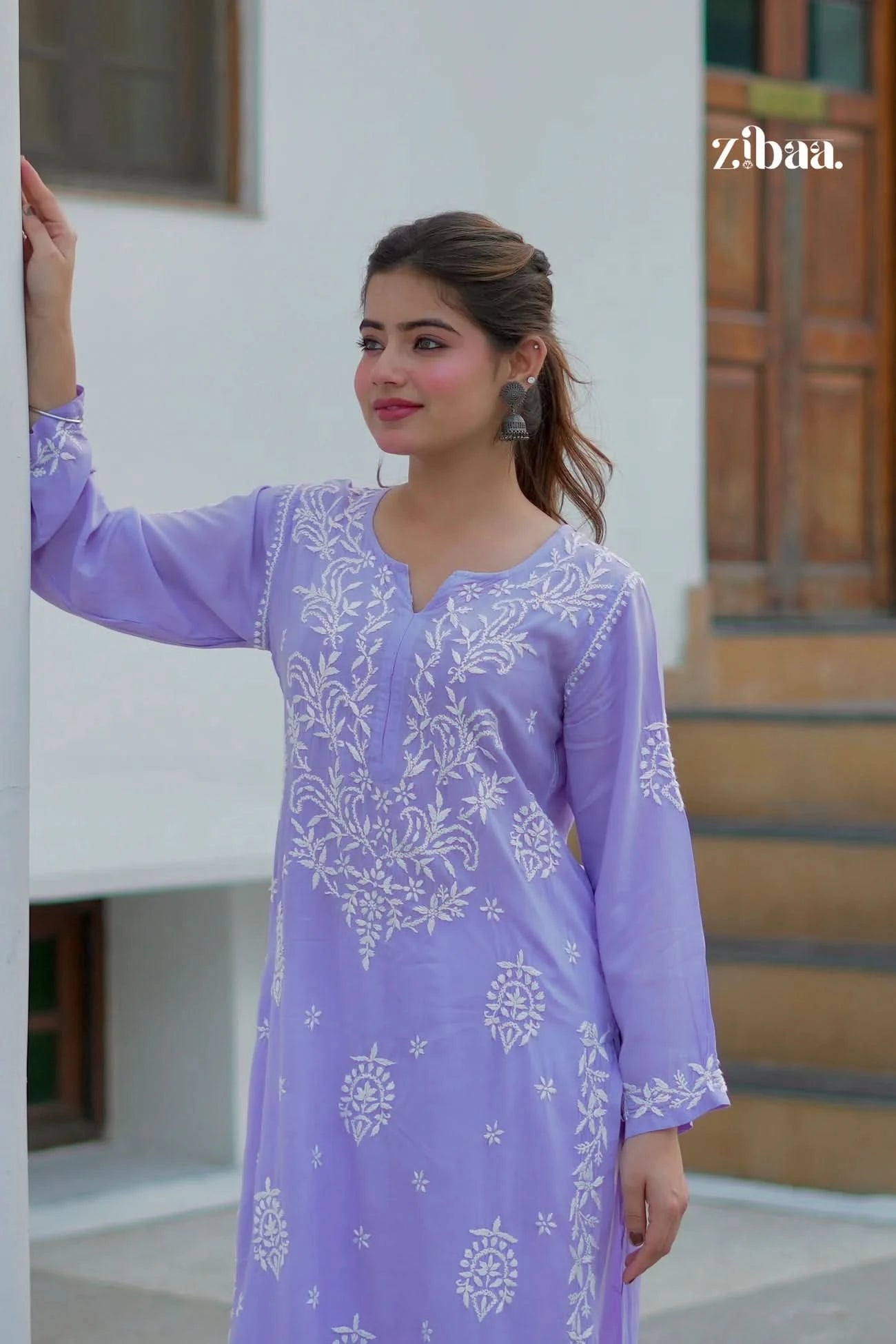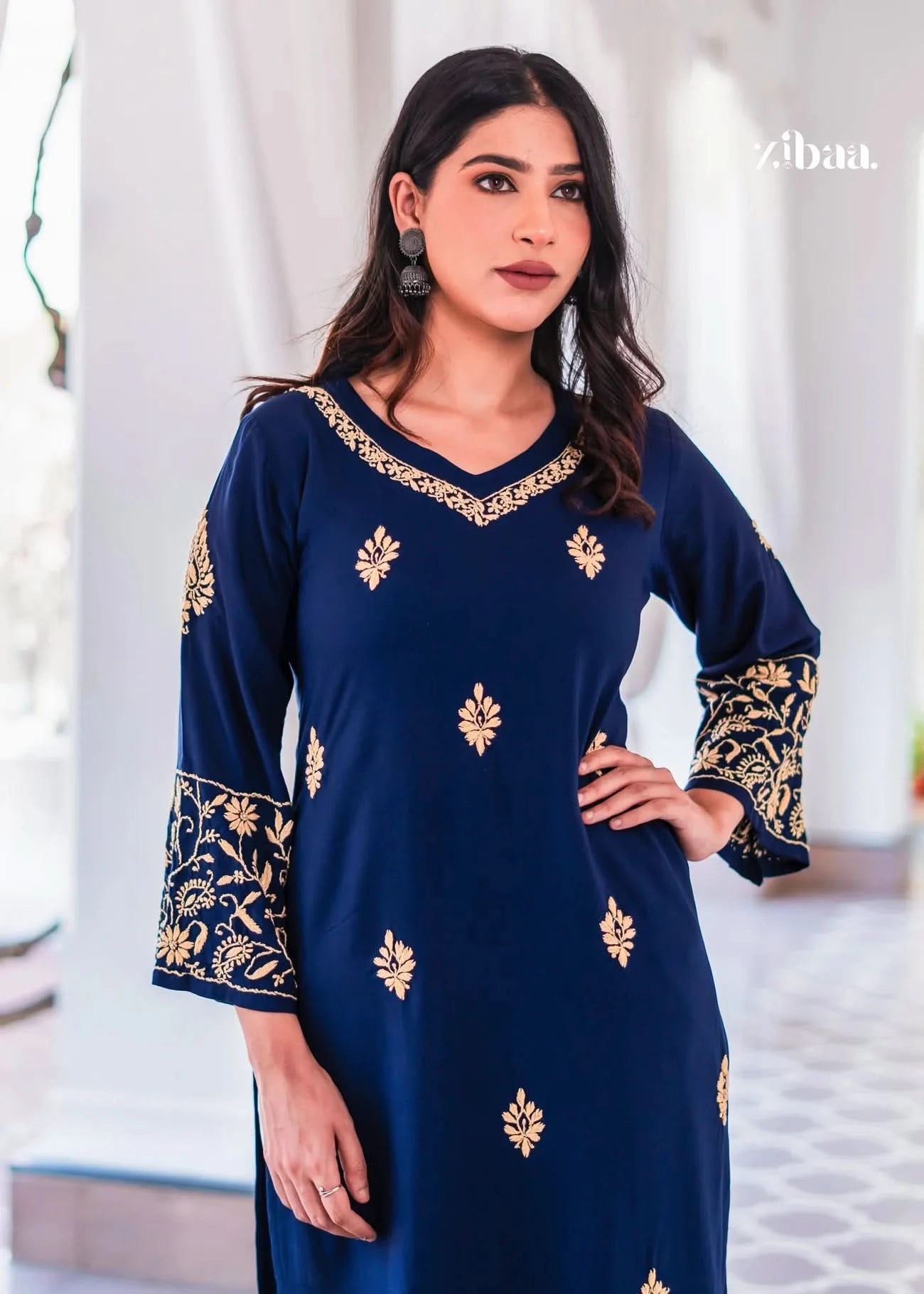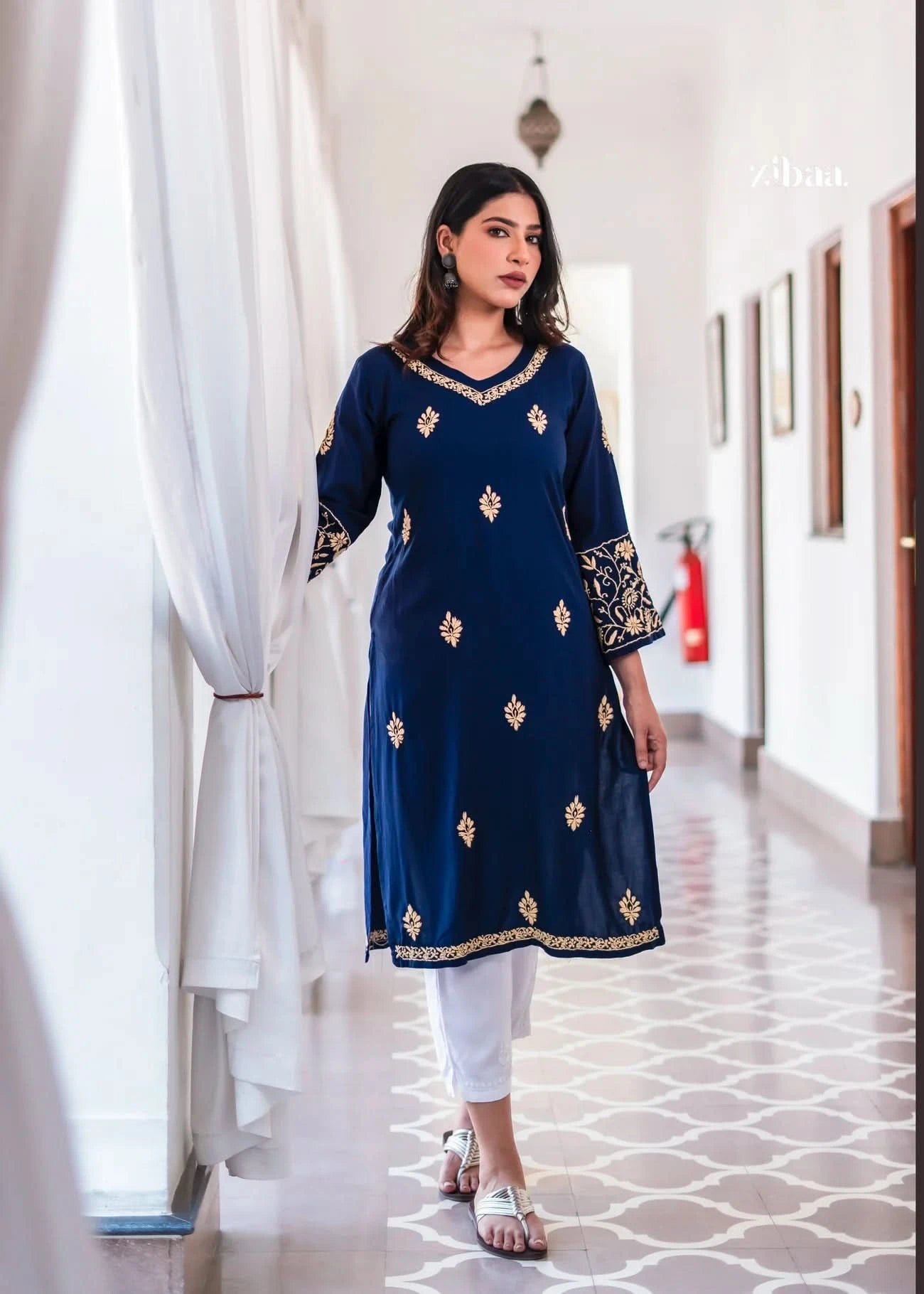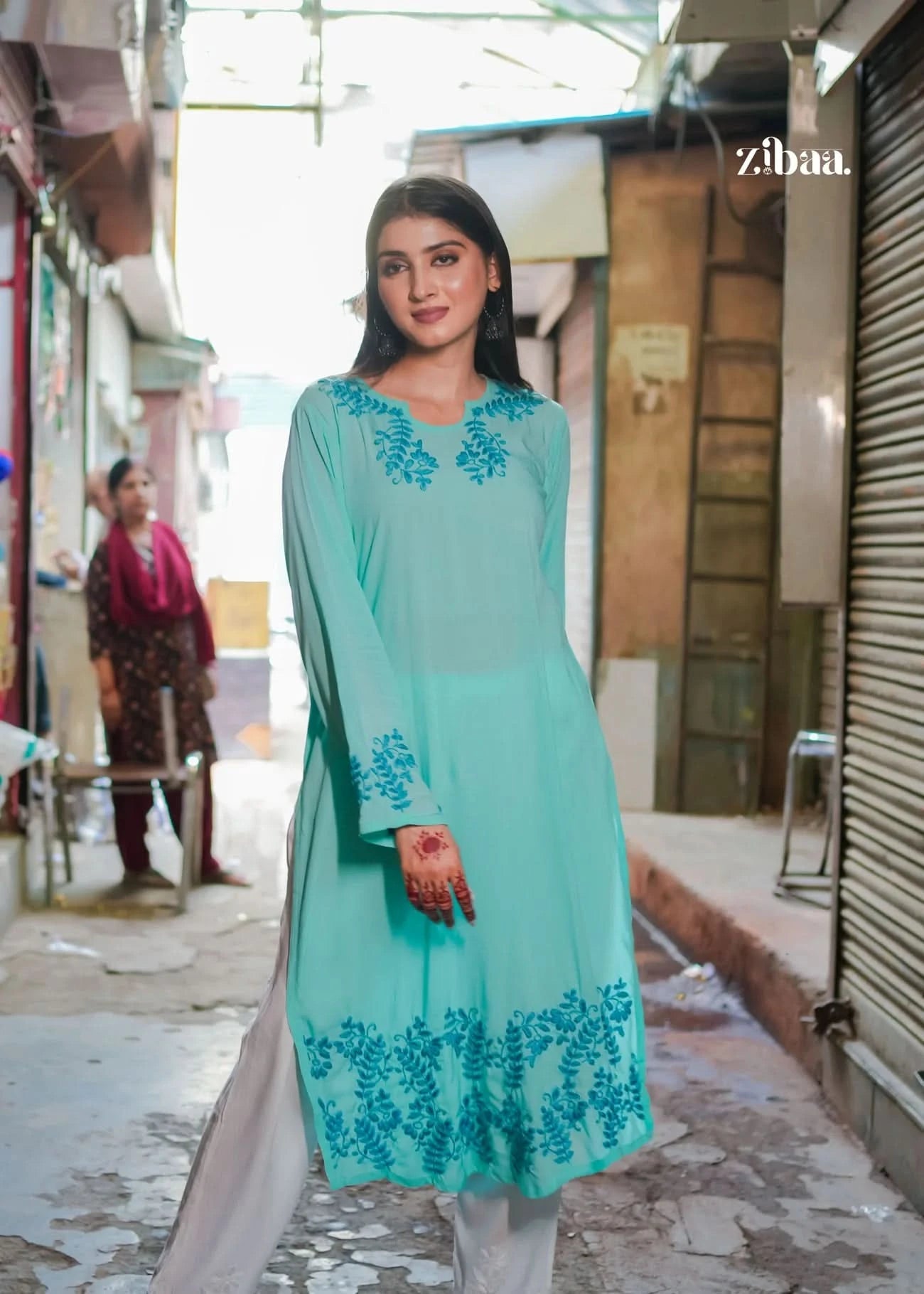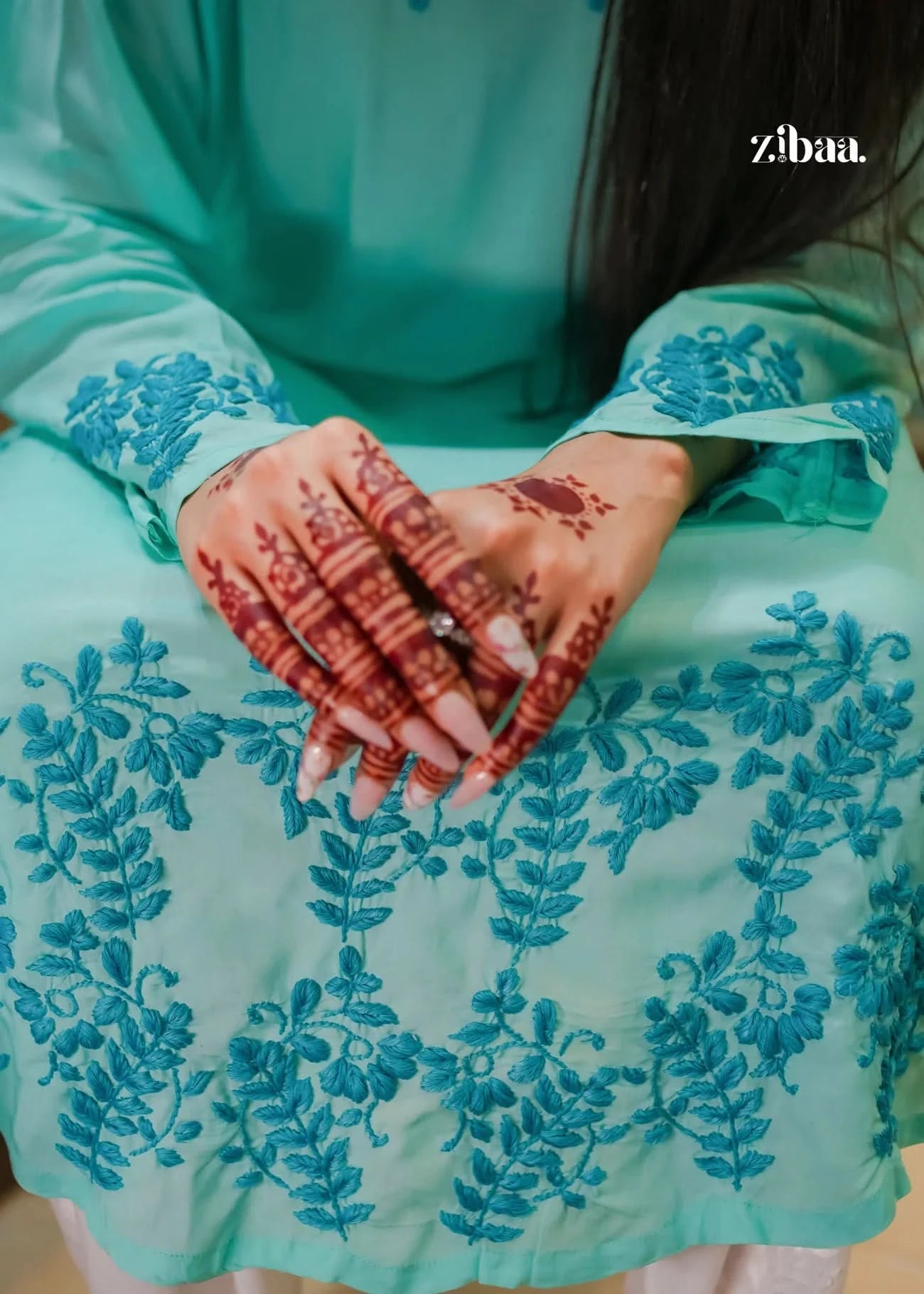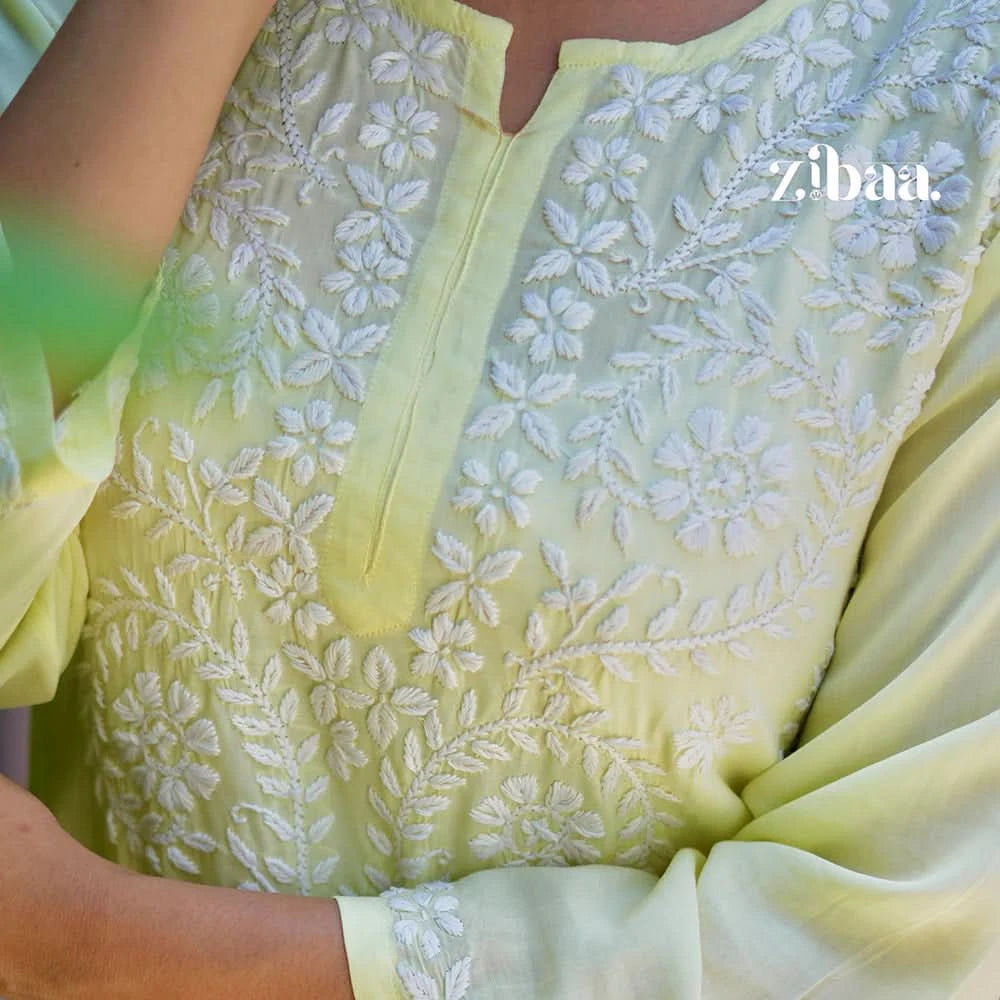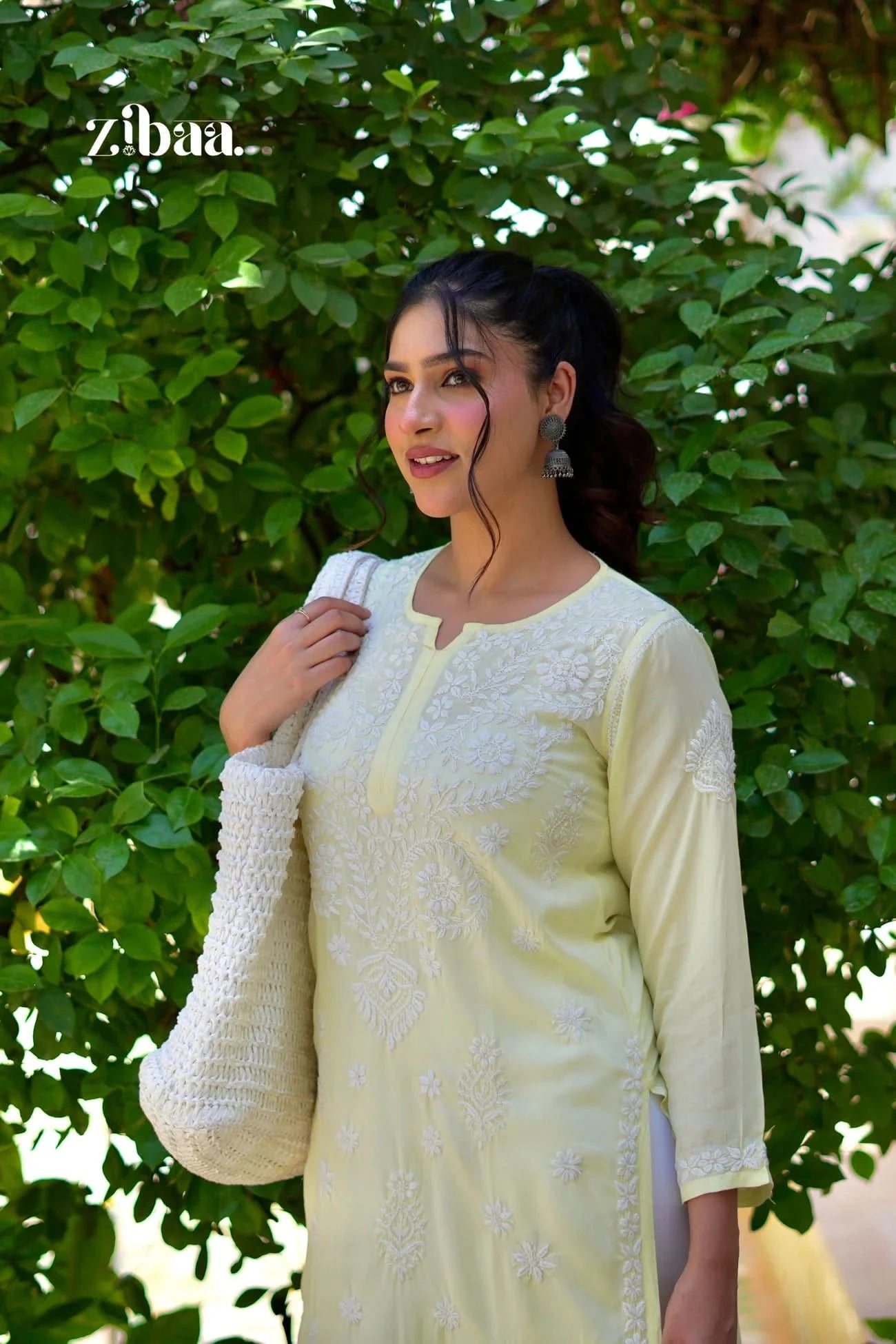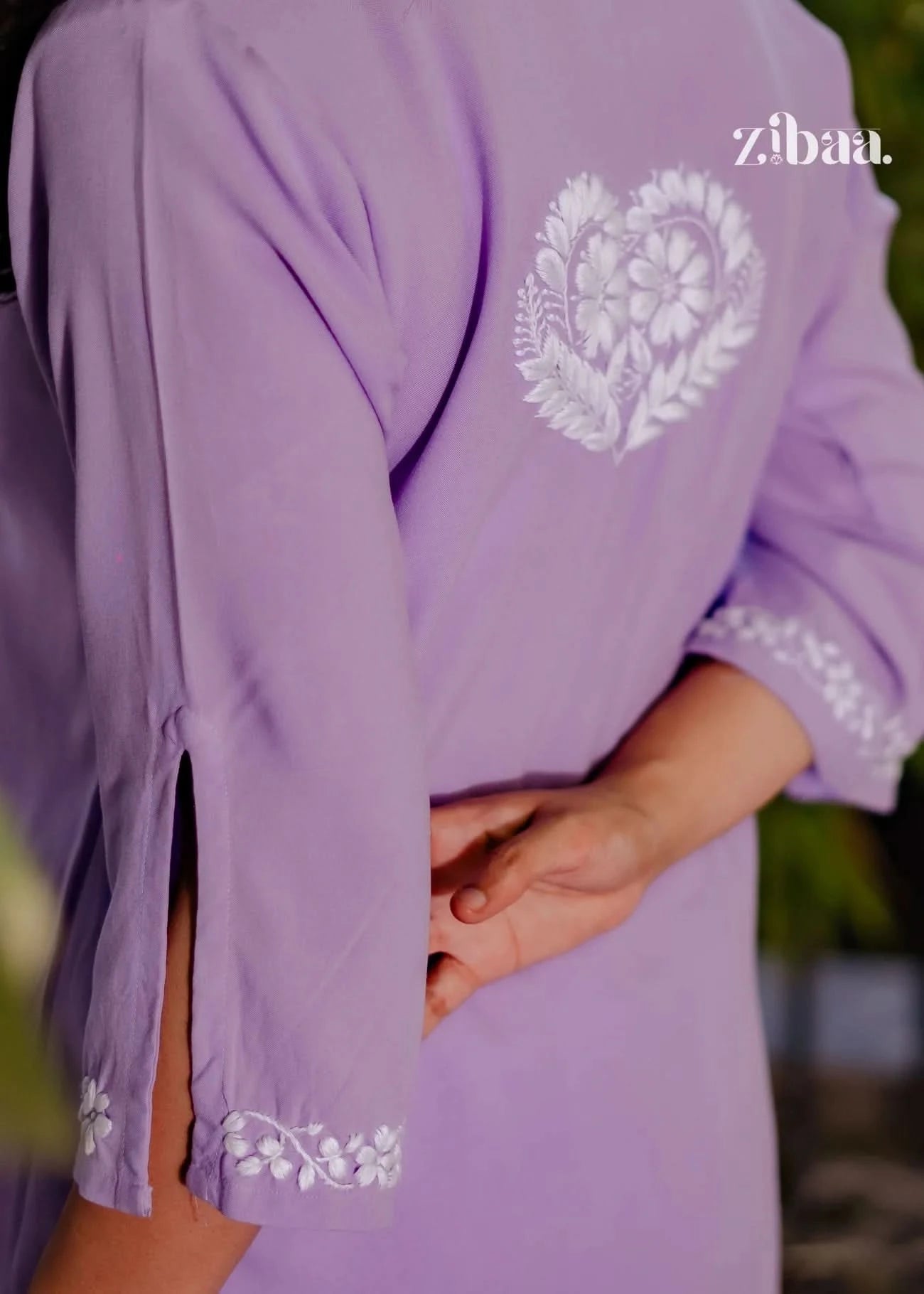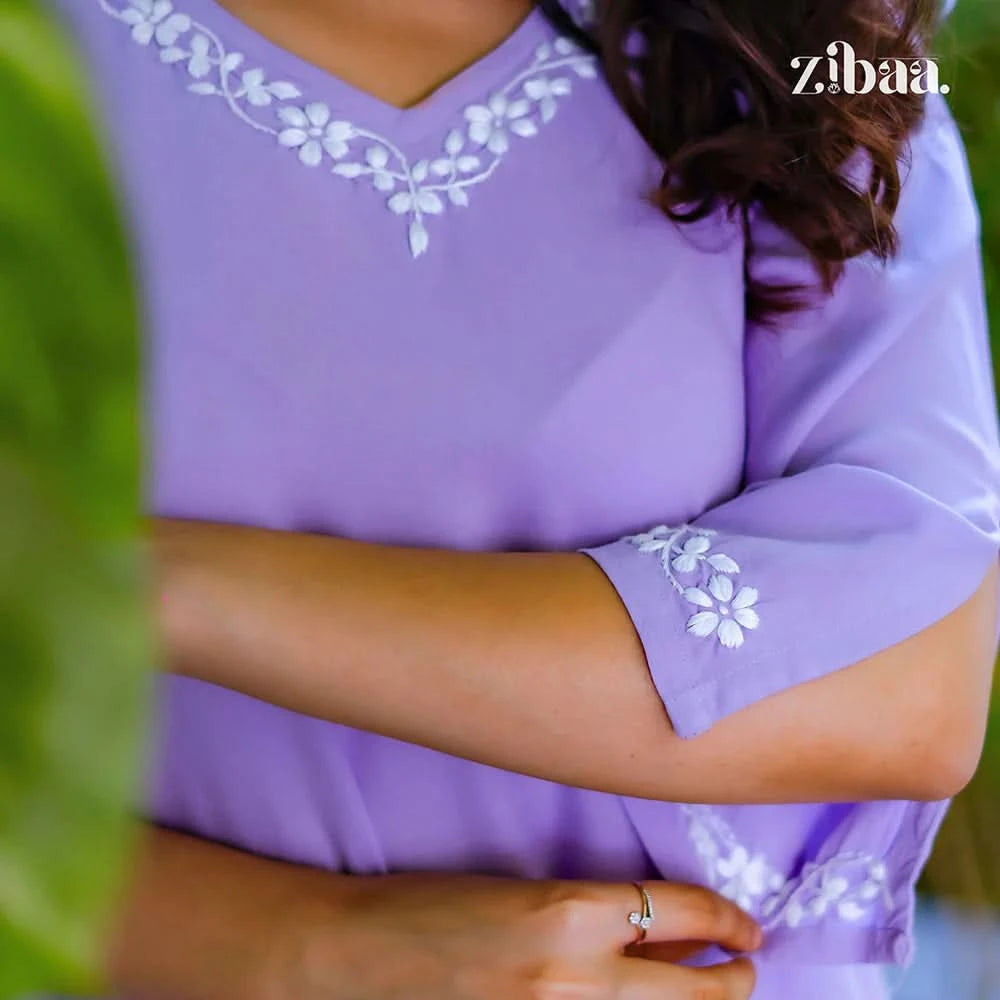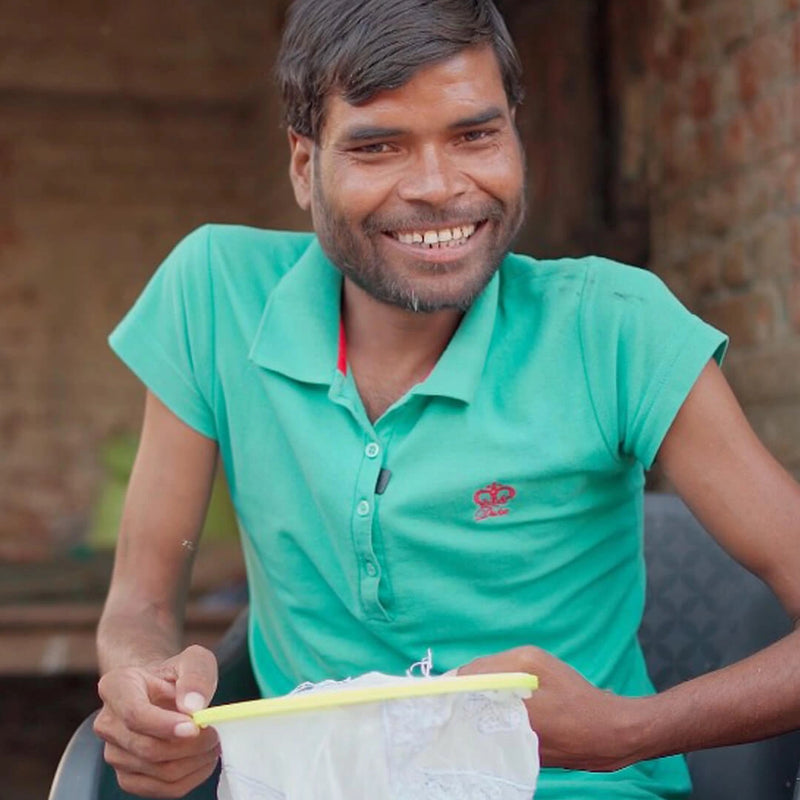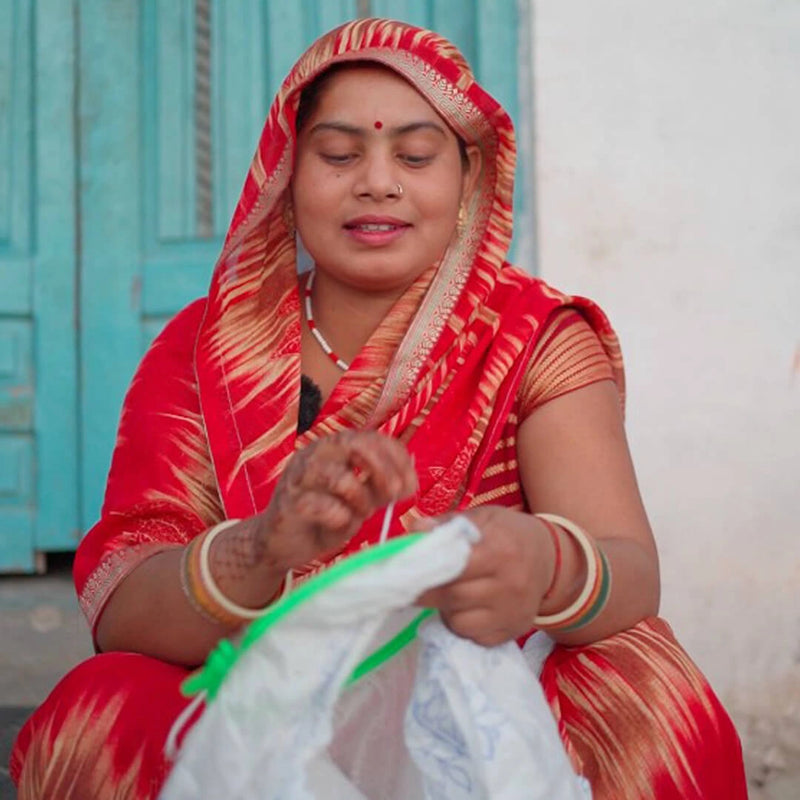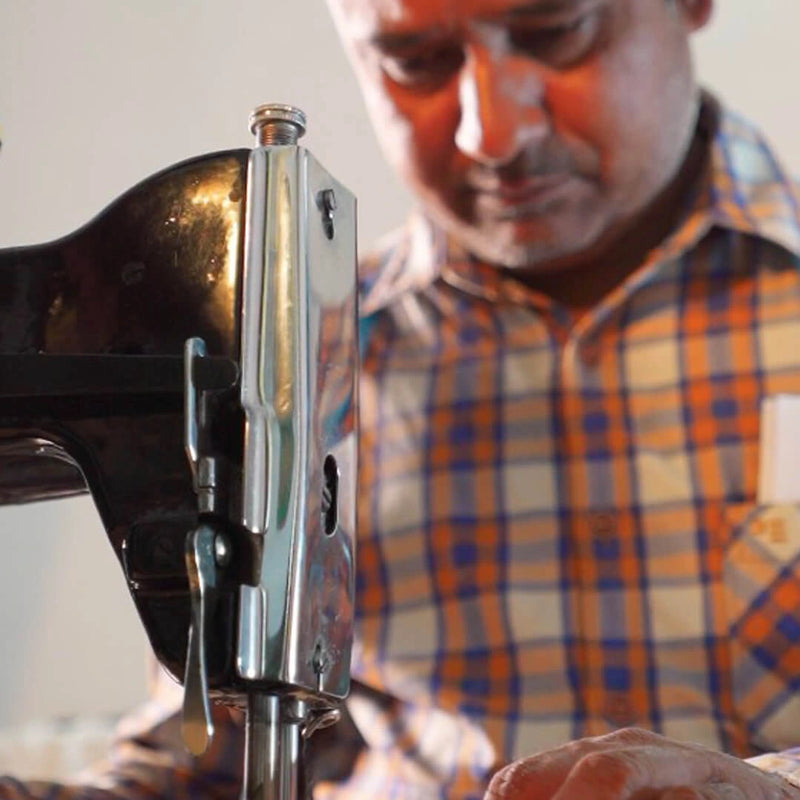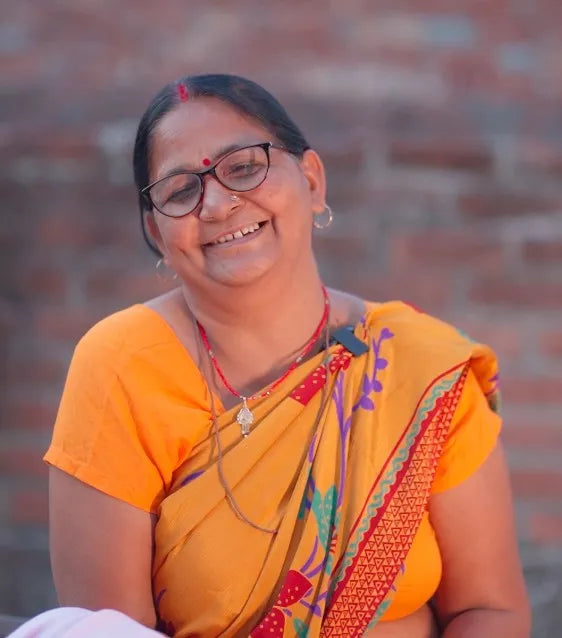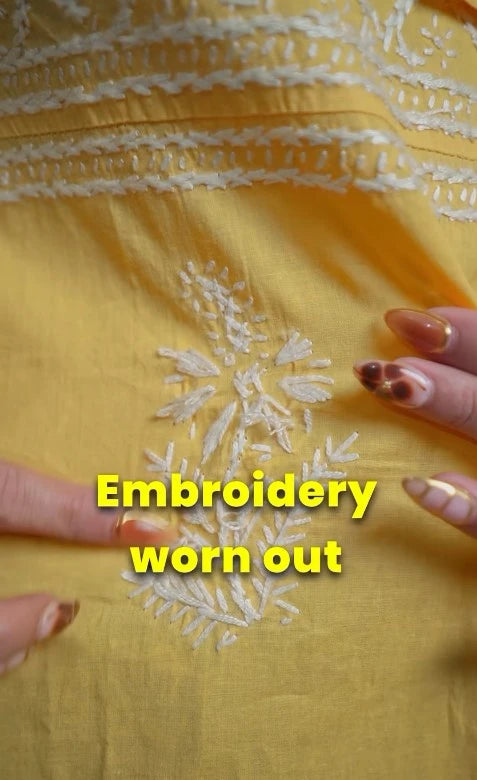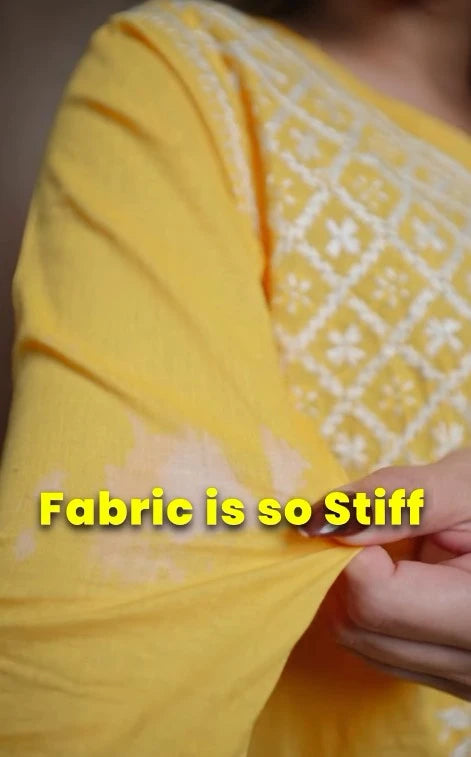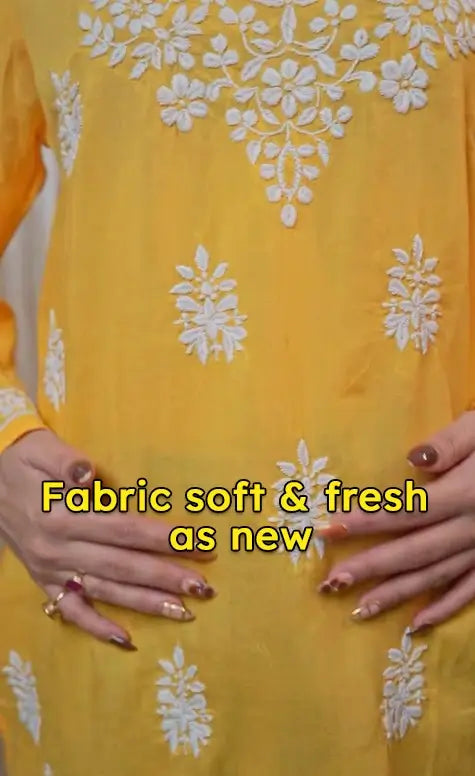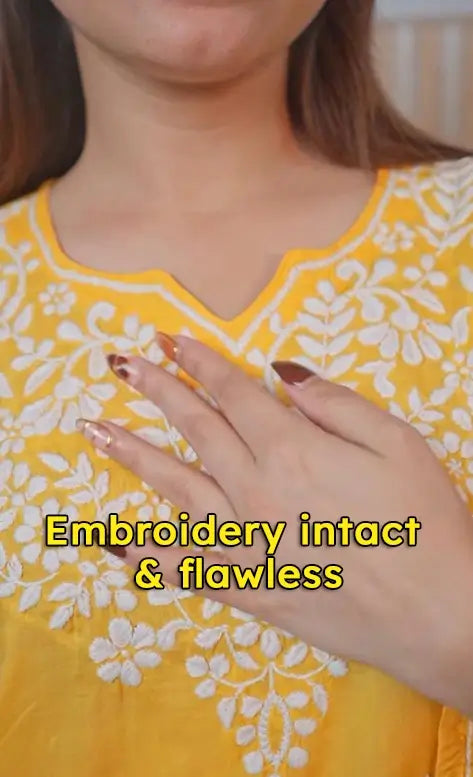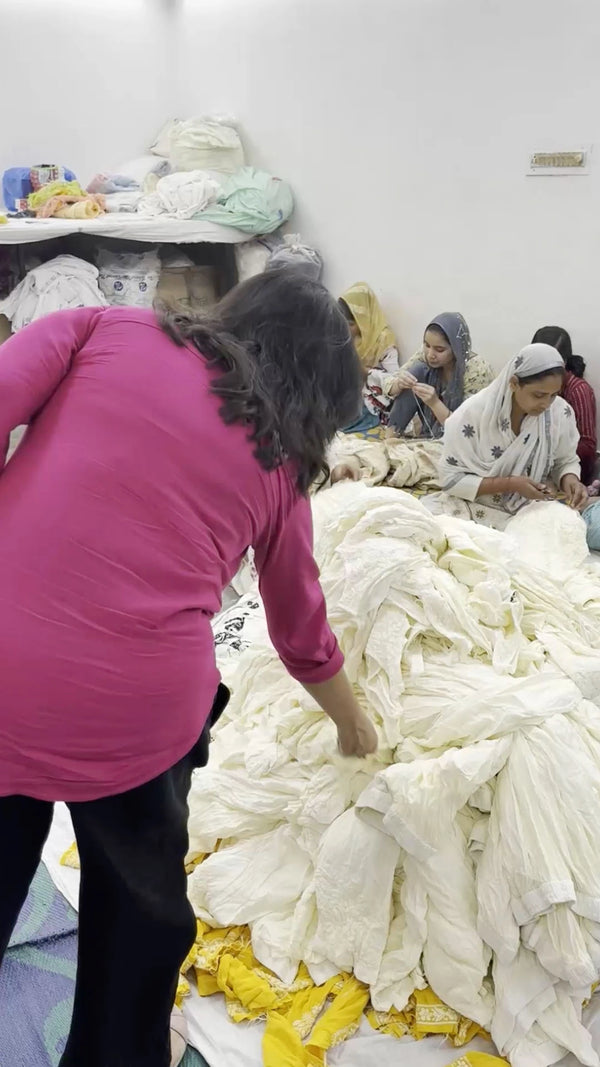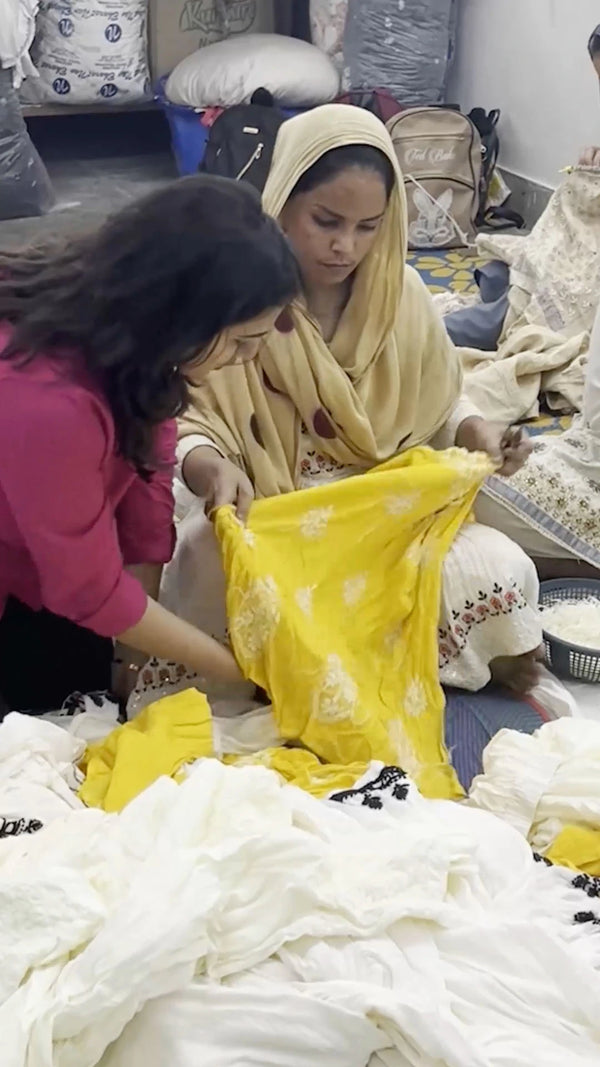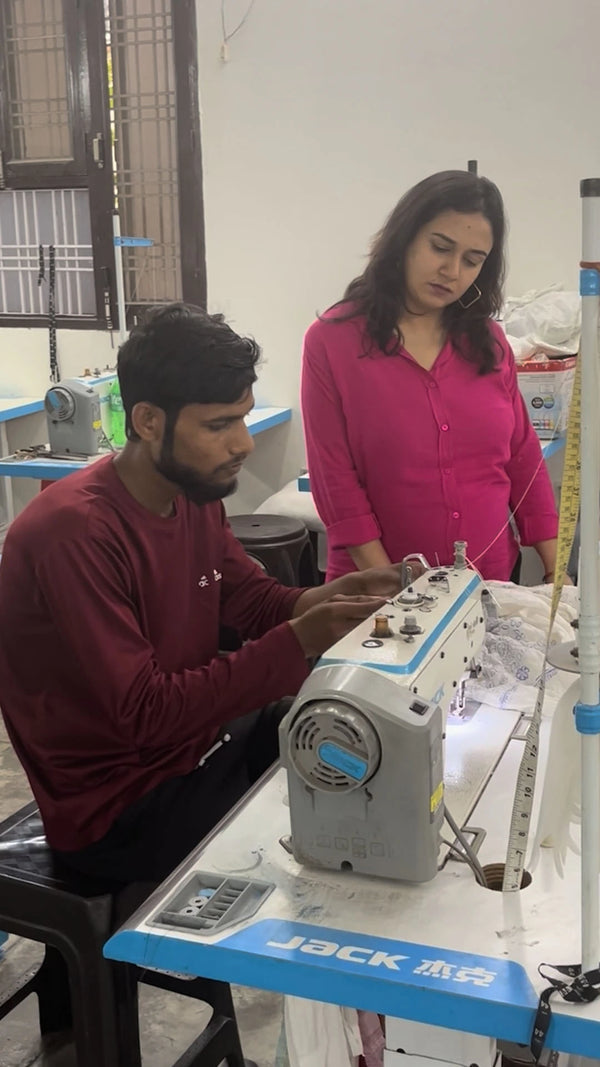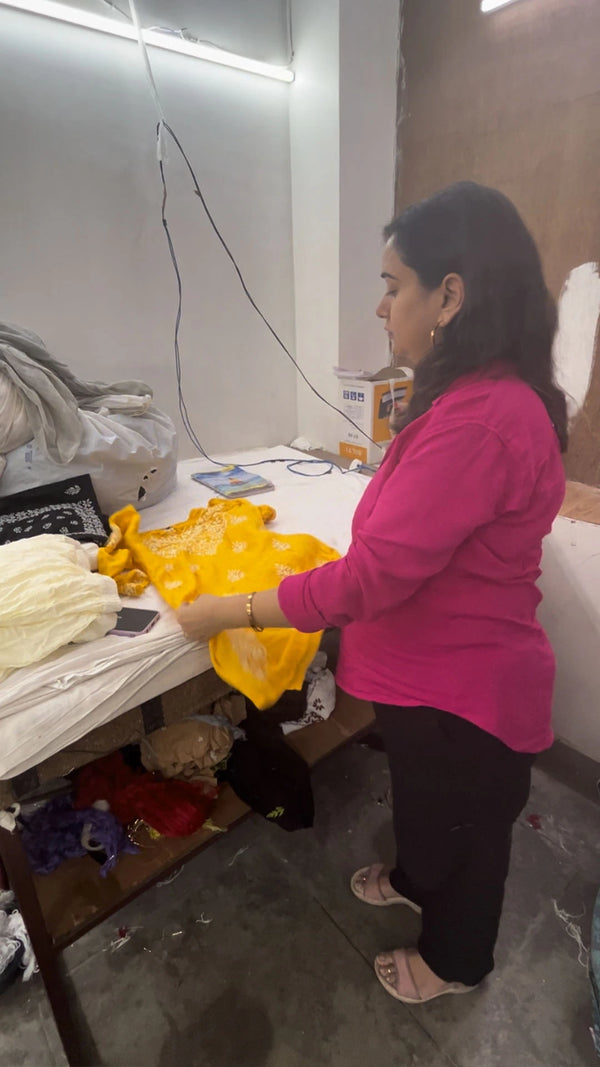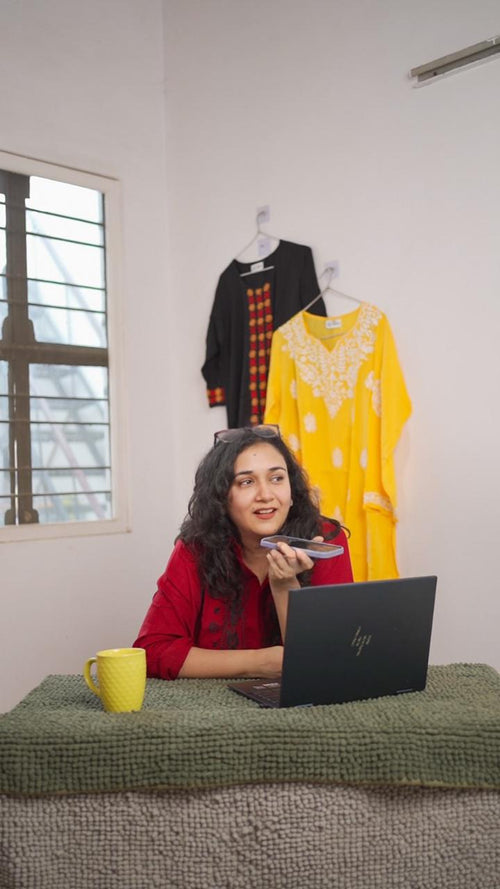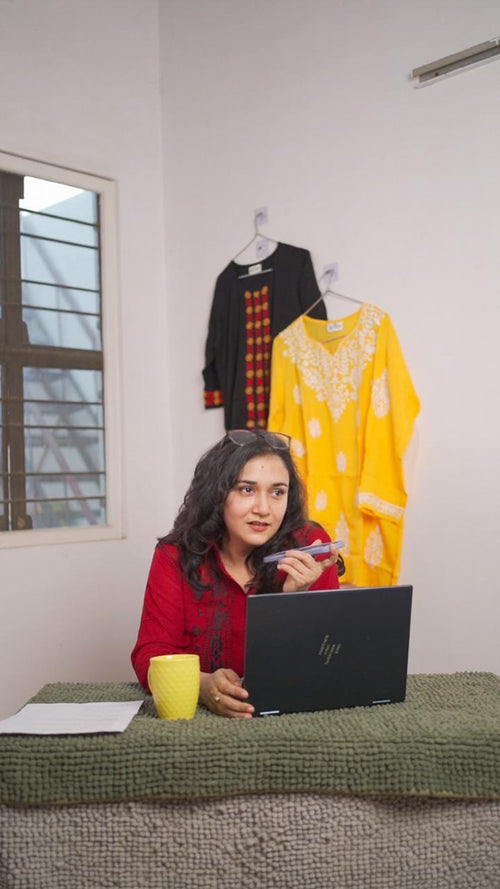How to Identify a Real Chikankari Kurti (And Avoid Buying a Fake)
Frequently Asked Questions
What makes blue Chikankari kurtis different from white or black ones?
Blue Chikankari kurtis create a calming yet vibrant look. Unlike white, which emphasizes purity, or black, which highlights contrast, blue works well for both casual daytime wear and semi-formal evening events.
Which embroidery threads work best on blue fabric?
White, cream, or pastel-colored threads stand out on blue fabric, providing subtle contrast. Metallic threads like gold or silver add a festive touch for celebrations.
Are blue Chikankari kurtis handmade or machine-made?
Premium blue Chikankari kurtis are hand-embroidered in Lucknow, where artisans use fine stitches that differ slightly, giving each kurti a unique texture.
Which fabrics are recommended for blue Chikankari kurtis in humid climates?
Cotton, georgette, and mulmul are best. Cotton absorbs sweat, georgette drapes well, and mulmul is lightweight, keeping you comfortable in hot, humid cities like Chennai or Kolkata.
Is blue Chikankari kurti suitable for office wear?
Yes, medium-toned blue kurtis paired with beige or pastel trousers create a polished, professional look suitable for office environments across India.
Do blue Chikankari kurtis fade faster than darker colors?
Lighter shades of blue may show slight fading if exposed to direct sunlight frequently. Gentle washing and shade drying prevent color loss over time.
Are blue Chikankari kurtis regionally popular?
They are widely favored in metro cities and coastal regions, where lighter, breathable fabrics complement the local climate.
What is the process of cleaning the kurti?
The kurti should be hand-washed in cold water with a very gentle detergent. Soak it and then swirl it a few times and rinse without twisting or wringing. Avoid bleaches and harsh chemicals. It should be air dried flat in a shaded area so as to maintain its embroidery and color.
How to dry a blue Chikankari kurti post-wash?
Place the kurti flat in the shade or hang it inside out for air drying. The embroidered face should be inwards so as not to fade with sunlight. It should dry evenly to avoid creases.
What are the ironing instructions for a Blue Chikankari Kurti?
Iron the kurti inside out on low to medium heat. Place a thin cloth over the embroidered sections to protect the delicate motifs. Avoid ironing directly over the threads to maintain the embroidery's texture and color.
How to remove minor stains from the Kurti?
For light stains, soak the kurti in lukewarm water with mild detergent for about 15 minutes. Gently scrub the area with a soft brush or clean cloth. Rinse thoroughly, then air dry.
What precautions should you take while wearing a Blue Chikankari Kurti?
Do not be exposed to the sun's glare for a very long time. Be careful as perfumes or lotion can leave their marks on the fabric. Check for loose threads and trim them carefully without pulling.
How to clean hard water stains from a Blue Chikankari Kurti?
Soak in a mixture of water and vinegar for 15 minutes to loosen up the mineral deposits. Wash away with clean water and air dry in a shade.
How to prevent color bleeding in a Blue Chikankari Kurti?
Before the first wash, soak the kurti in cold salt water for 30 minutes to set the color. Wash separately from other clothes to avoid color transfer. Always use mild detergents for cleaning.
What’s the best way to style a traditional blue outfit for formal events?
A full-sleeve blue chikankari kurti is best teamed with a pair of stunning white palazzos or slim-fit trousers for an elegant silhouette. Drape a light contrasting pastel dupatta over it and wear pearl earrings or silver jhumkas as jewelry to complete the outfit with some fine sandals or block heels.
Which types of bottoms pair well with a traditional blue embroidered top?
From churidars to leggings to wide-legged pants to shararas and skirts, these are all possible bottom wear combinations. With white, beige, or navy bottoms, the drapery of kurti, adorned with intricate embroidery, will shine.
Which footwear goes best with a Blue Chikankari Kurti?
Opt for traditional mojaris, juttis, or kolhapuris for an ethnic look. For a contemporary twist, you can also pair it with wedges, ankle boots, or embellished sandals.
What are some good ways to accessorize a traditional blue outfit for evening parties?
Style with statement earrings, a metallic clutch, and high heels. Add a bold silver necklace or a simple bracelet to complete the look. A sheer dupatta with sequins can enhance the festive vibe.
What kind of makeup goes well with a traditional blue outfit?
A fresh makeup look with dewy base, kohl-rimmed eyes, and soft pink or nude lips works well. For parties, go for bold blue eyeliner, highlighted cheekbones, and a hint of shimmer.
How to layer a Blue Chikankari Kurti for winter?
Add a long woolen shrug or an embroidered shawl for warmth. Pair with ankle boots or closed-toe flats for a cozy yet stylish look. Layer with an overcoat or denim jacket for a casual winter outfit.
Are there any discounts available on ordering kurti from Zibaa?
Zibaa has some great payment deals to make shopping better. You get an automatic 10% off at checkout and an extra 5% off on prepaid orders. Plus, shipping is free across India. Spend over ₹2,999 on select items, and you’ll also get a free embroidered salwar.
Is there a minimum order limit to avail free shipping?
Yes, Zibaa offers free shipping within India on all orders, with no minimum purchase requirement. This means you can enjoy complimentary delivery regardless of your order total.
Does Zibaa offer any special discounts on payment?
Yes. Zibaa gives you a flat 10 percent discount automatically at checkout with no code needed. If you pay in advance you get an extra 5 percent off. All orders ship free across India.
Which type of online payment can you do on Zibaa?
Zibaa allows payment by Credit/Debit Cards, Net Banking, UPI, Wallets, Gift Cards, and Cash Against Delivery.
Is Cash on Delivery applicable for Blue Chikankari Kurtis?
Yes, you can choose cash on delivery at the checkout. Pay for your blue Chikankari kurti after it's delivered to you.
Can you exchange if your blue Chikankari Kurti is not the correct size?
Definitely, because Zibaa offers free size exchanges. Just make sure that the product is not used with all the tags intact and request exchange. Any price difference will be adjusted accordingly.
Whom to contact for queries regarding Zibaa orders?
For assistance, reach out to Zibaa customer care or email support@zibaa.in. Customer service is available Monday to Friday to address your queries.
Meet the Chikankari Artisans Behind the Craft
One year challenge : Zibaa vs Others
How does your Zibaa kurti fare vs other chikankari kurtis after one year


